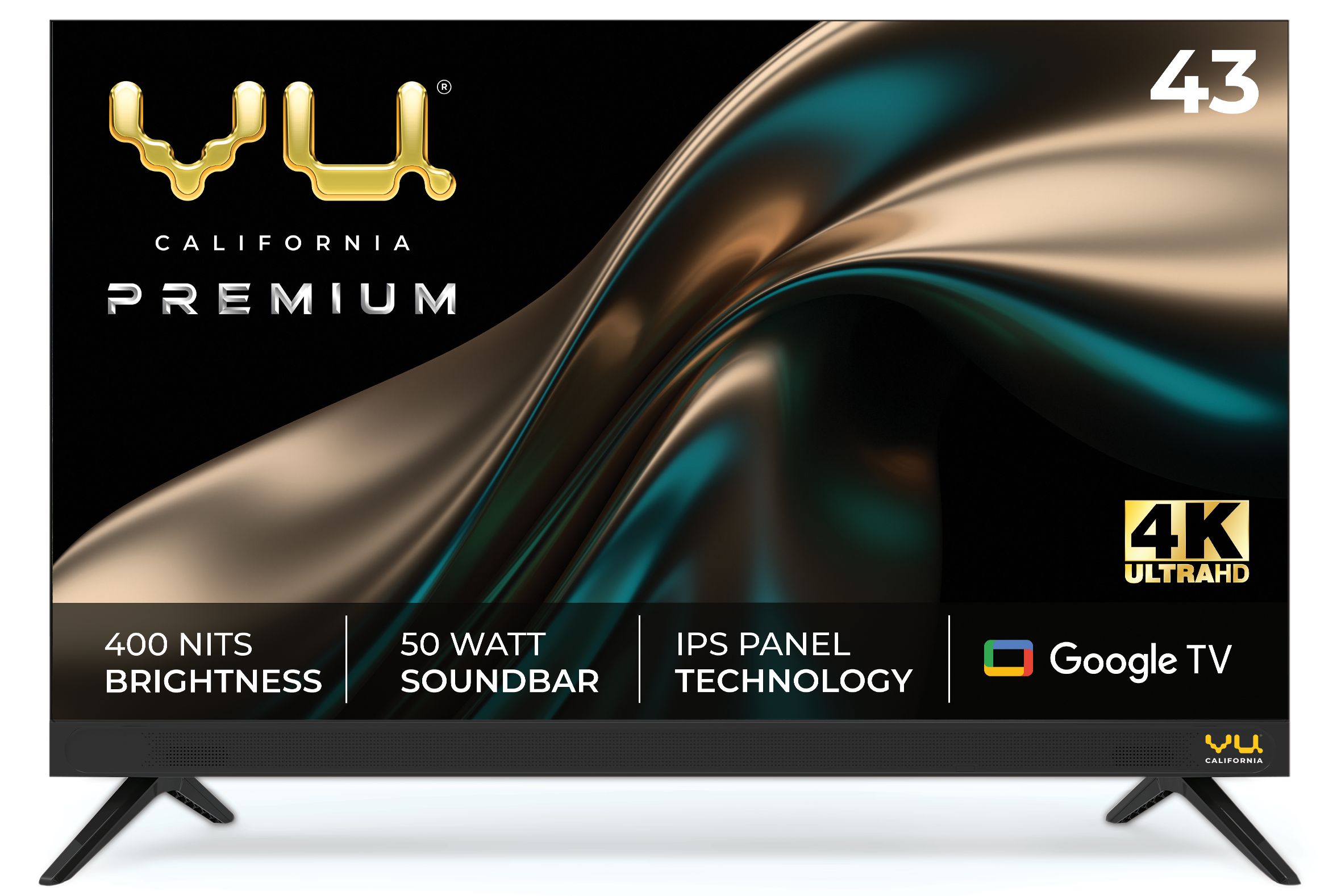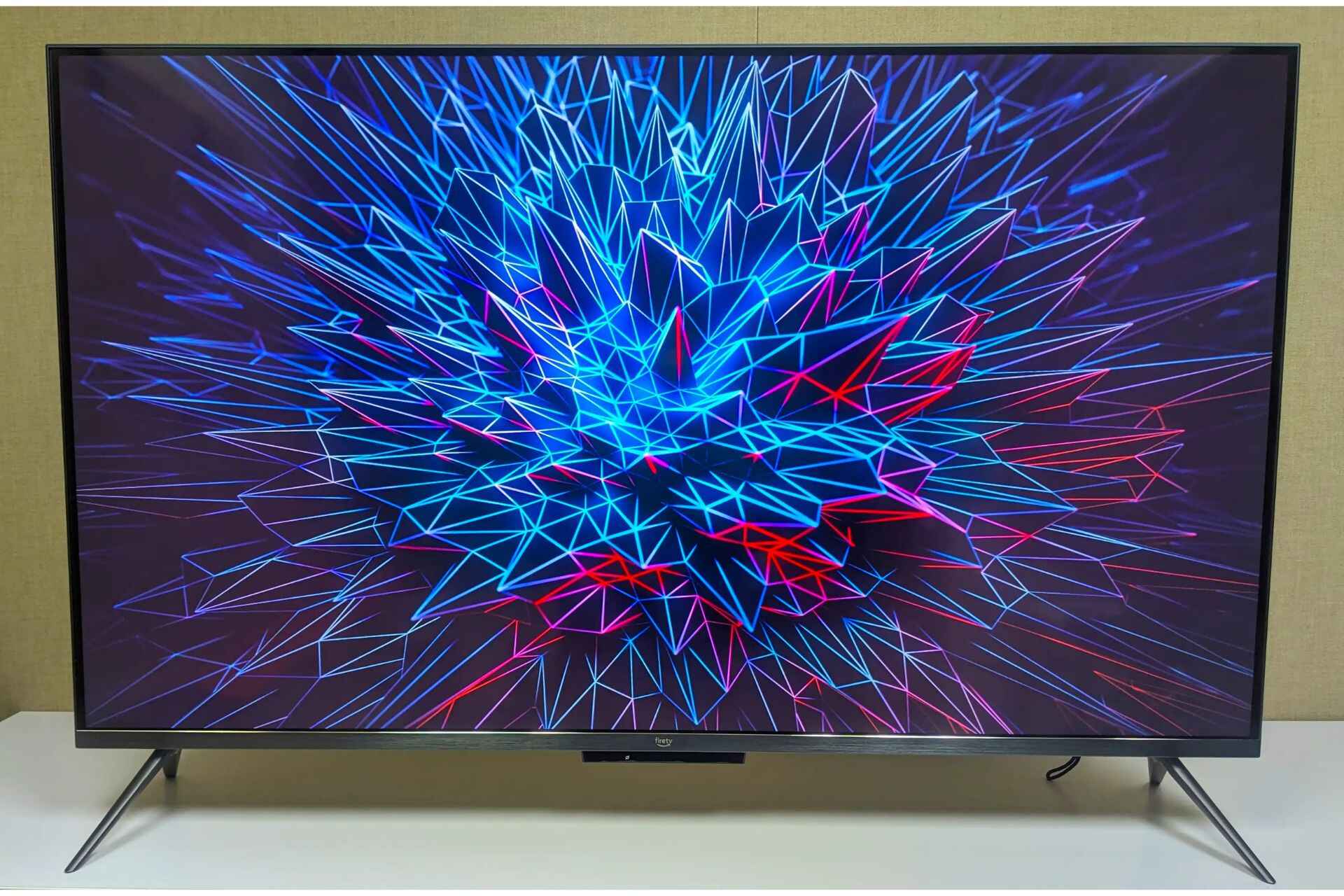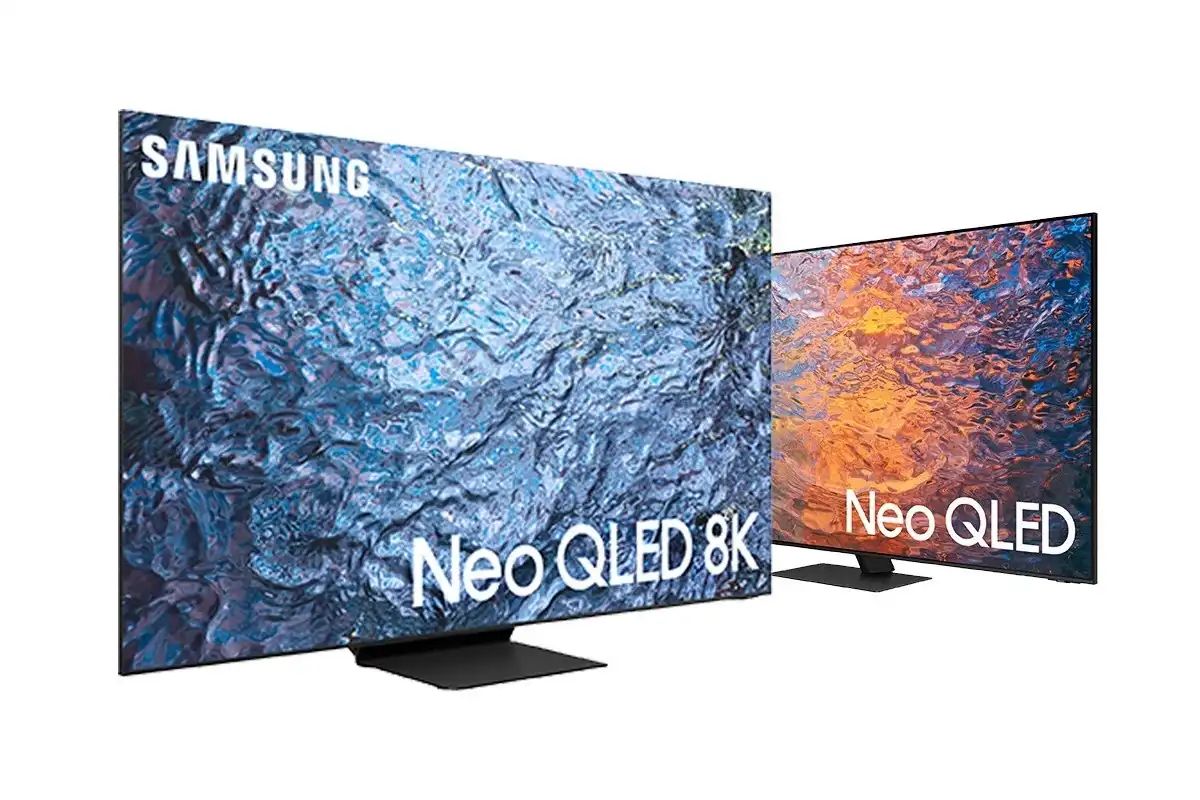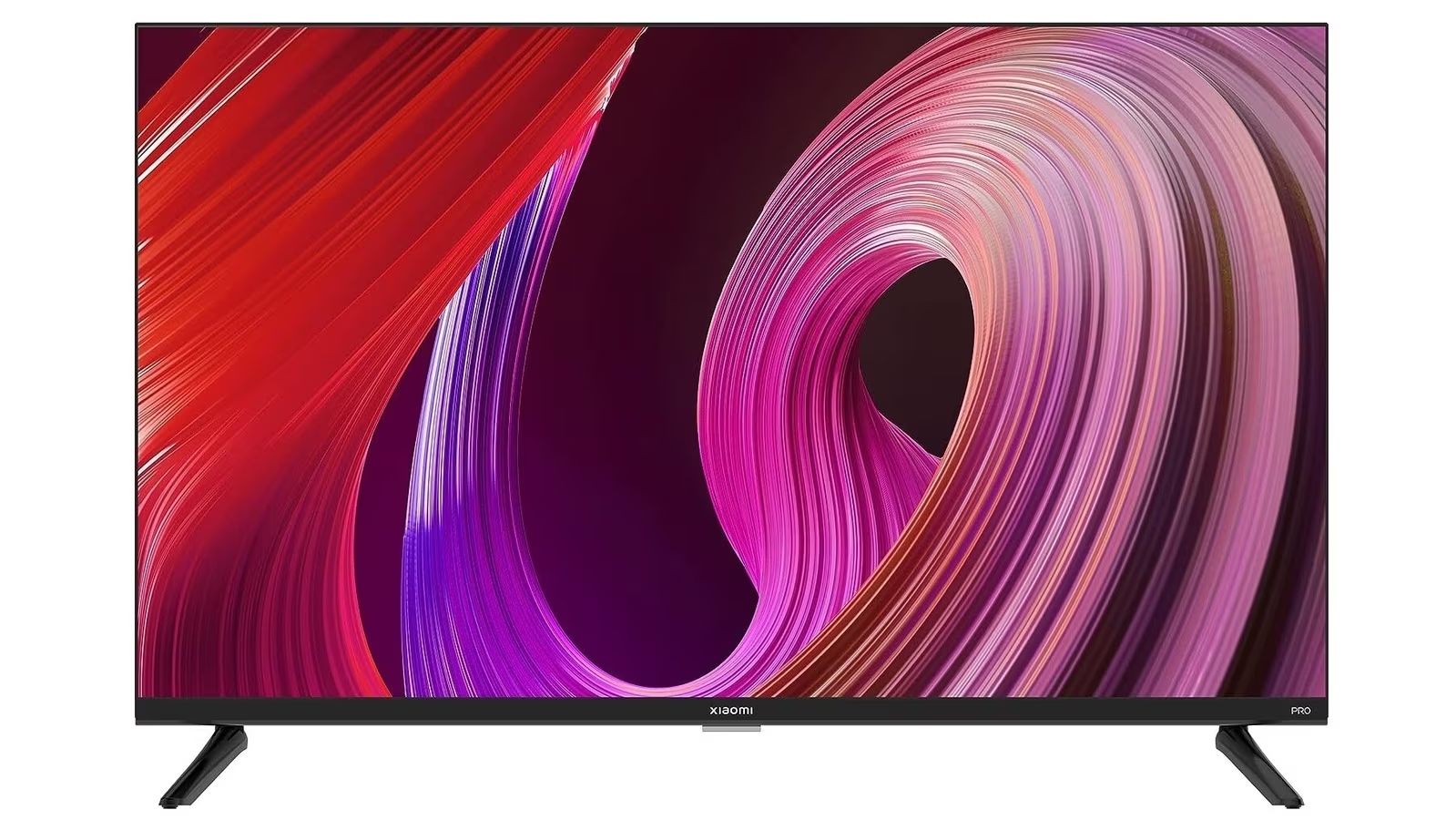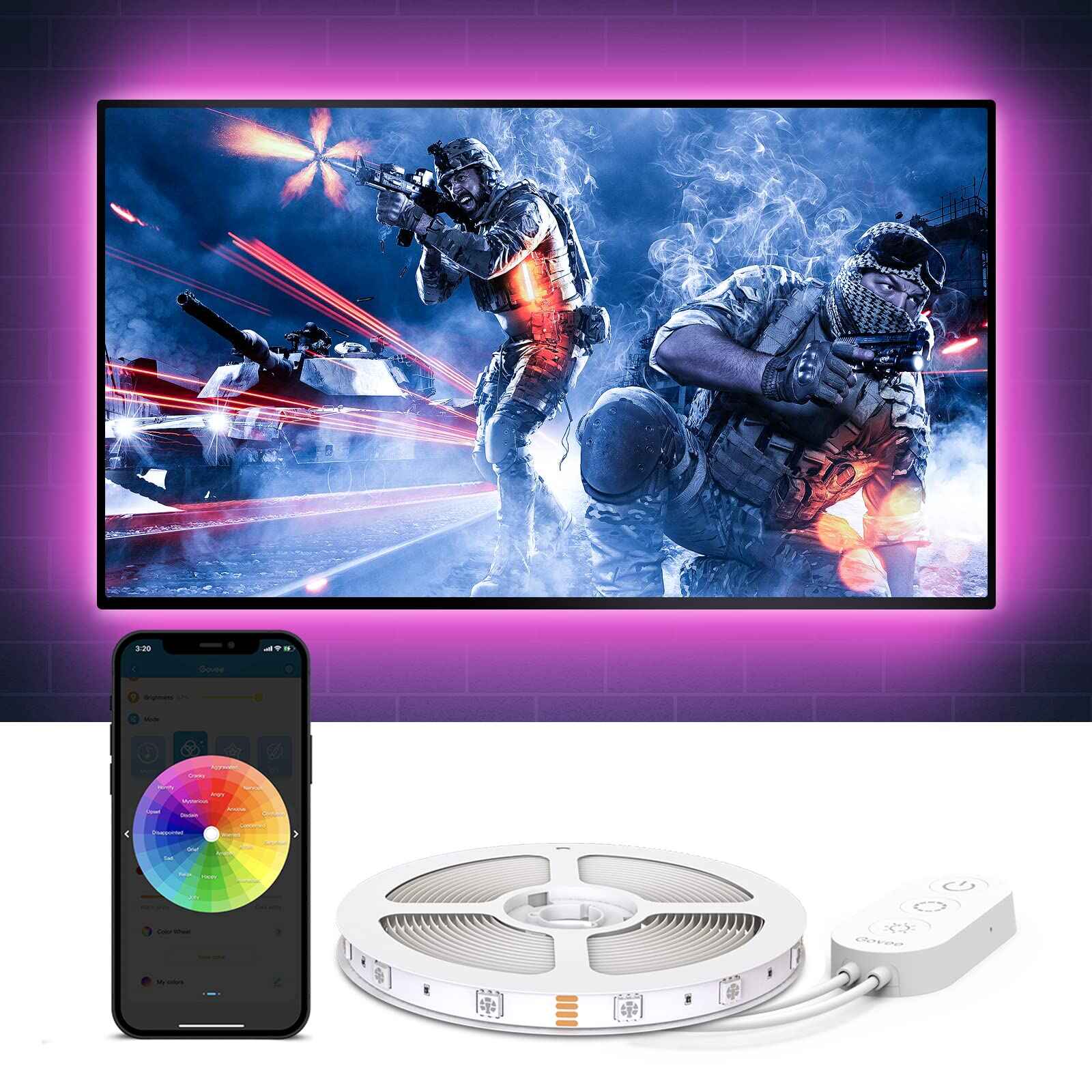Introduction
Welcome to the world of LED TVs! With their sleek design, vibrant colors, and stunning picture quality, LED TVs have revolutionized the television industry. But what exactly does LED mean, and how do these TVs work? In this article, we will explore the fascinating world of LED technology, its advantages over other types of TVs, and how to choose the right LED TV for your needs. So, let’s dive in and discover what makes LED TVs a popular choice for home entertainment.
LED stands for Light Emitting Diode. Unlike traditional CRT or plasma televisions, LED TVs use an array of tiny light-emitting diodes to create the images on the screen. These diodes illuminate and produce colored light when an electric current passes through them. LED TVs come in two different types: edge-lit and full-array.
Edge-lit LED TVs have the diodes placed around the edges of the screen. The light is then distributed across the screen using a series of light guides or reflectors. This design allows for a slim profile and thinner bezels, making edge-lit LED TVs a popular choice for those seeking a sleek and modern look.
On the other hand, full-array LED TVs have the diodes placed evenly across the entire back of the screen. This setup provides more precise control over the backlighting, allowing for better contrast and black levels. Full-array LED TVs also have local dimming zones, which can independently dim or brighten specific parts of the screen, resulting in deeper blacks and enhanced picture quality.
LED TVs offer several advantages over other types of TVs. Firstly, they are energy-efficient. LED technology consumes less power compared to older models, resulting in lower electricity bills. Additionally, LED TVs have a longer lifespan, allowing you to enjoy your entertainment for years to come. LED TVs also provide better color accuracy and brightness, delivering a more immersive viewing experience.
Now that we have a basic understanding of LED technology and its benefits, let’s explore the differences between LED and LCD TVs, and how to make an informed decision when choosing the right LED TV for your home.
What is LED?
LED, or Light Emitting Diode, is a semiconductor device that emits light when an electric current passes through it. LEDs have become popular in various technological applications, including lighting, displays, and of course, televisions.
LEDs are made up of layers of different materials. The two main layers are the p-type and the n-type. The p-type layer contains positively charged carriers, known as holes, while the n-type layer contains negatively charged carriers, known as electrons. When an electric current flows through the LED, the electrons and holes recombine, releasing energy in the form of light.
LEDs have several advantages over traditional light sources. Firstly, LEDs are incredibly energy-efficient. They consume much less power compared to incandescent or fluorescent bulbs, making them an environmentally friendly option. LED technology has also improved over the years, allowing for brighter and more efficient lighting.
LEDs also have a longer lifespan compared to traditional bulbs. While incandescent bulbs may last for only a few thousand hours, LEDs can last for tens of thousands of hours. This longevity means less frequent replacements and reduced maintenance costs.
LEDs are also known for their ability to produce vibrant and customizable colors. Unlike traditional bulbs that emit a spectrum of light, LEDs can be tuned to specific wavelengths, allowing for more accurate and precise color reproduction. This feature is particularly beneficial in applications such as televisions and displays, where color accuracy is crucial for an immersive viewing experience.
LED technology is used in a wide range of devices and appliances, but it has perhaps made the most significant impact in the television industry. LED TVs utilize arrays of LEDs as their backlight source, providing improved brightness and contrast compared to older display technologies.
LED TVs come in various forms, including edge-lit and full-array. Edge-lit LED TVs have the LEDs placed along the edges of the screen, while full-array models feature LEDs distributed evenly across the entire back panel. These LEDs can be individually dimmed or brightened, allowing for better control over contrast and black levels.
In summary, LEDs are semiconductor devices that emit light when an electric current passes through them. They offer numerous advantages, including energy efficiency, long lifespan, and vibrant color reproduction. LED technology has transformed the television industry, giving rise to sleek and visually stunning LED TVs.
How does LED TV work?
LED TVs, or Light Emitting Diode televisions, use an array of tiny light-emitting diodes to display images on the screen. These diodes work together to create a vibrant and visually appealing picture. Let’s take a closer look at how LED TVs work.
At the heart of an LED TV is the backlighting system. This system is responsible for illuminating the screen and creating the images we see. In LED TVs, the backlighting is provided by an array of LEDs positioned behind the screen. These LEDs emit light when an electric current passes through them.
LED TVs come in two main types: edge-lit and full-array. Edge-lit LED TVs have LEDs placed around the edges of the screen. The light from these LEDs is then distributed across the entire screen using light guides or reflectors. This design allows for a slim and lightweight TV with minimal bezels.
On the other hand, full-array LED TVs have LEDs evenly distributed across the entire back panel of the screen. This setup offers more precise control over the backlighting. Full-array LED TVs also typically feature local dimming zones, allowing for individual areas of the screen to be dimmed or brightened independently. This local dimming capability enhances contrast and black levels, resulting in a more immersive viewing experience.
Once the LEDs emit light, it passes through color filters and other optical components to create the final image. In LED TVs, each LED can be individually controlled, allowing for precise manipulation of color and brightness. This fine-tuning ensures accurate color reproduction and vibrant visuals.
In addition to the backlighting system, LED TVs also incorporate other advanced technologies to enhance the viewing experience. These technologies may include high refresh rates to reduce motion blur, local contrast enhancements for sharper images, and HDR (High Dynamic Range) capabilities to deliver more realistic colors and brightness levels.
The LEDs used in LED TVs are efficient and long-lasting. They consume less power compared to older display technologies, making LED TVs more energy-efficient. Additionally, LEDs have a longer lifespan, meaning you can enjoy your LED TV for many years without worrying about frequent replacements.
In summary, LED TVs work by utilizing an array of light-emitting diodes as the backlighting source. These LEDs emit light when an electric current passes through them, illuminating the screen and creating vibrant images. The precise control over the LEDs allows for accurate color reproduction and enhanced contrast. LED TVs also incorporate other technologies to further improve the viewing experience.
Advantages of LED TV
LED TVs offer several advantages over other types of televisions, making them a popular choice among consumers. From energy efficiency to enhanced picture quality, let’s explore the benefits of owning an LED TV.
One of the significant advantages of LED TVs is their energy efficiency. LED technology consumes less power compared to older display technologies such as CRT or plasma. This energy efficiency not only helps to reduce your electricity bills but also makes LED TVs more environmentally friendly.
LED TVs also have a longer lifespan compared to other types of TVs. While older models may require frequent bulb replacements, LED TVs can last for tens of thousands of hours. This longevity means less maintenance and lower replacement costs in the long run.
Picture quality is another area where LED TVs excel. LEDs offer a wide color gamut, allowing for more accurate and vibrant color reproduction. The individual control of LEDs in full-array models also enables better contrast, deeper blacks, and enhanced picture detail. These features combine to deliver a more immersive and visually stunning viewing experience.
LED TVs are known for their slim and sleek design. With edge-lit LED TVs, the LEDs are positioned along the edges of the screen, allowing for a thinner profile and minimal bezels. This design not only looks modern and stylish but also provides flexibility in placement options.
LED TVs also offer better brightness compared to other display technologies. LEDs can be brighter and produce more consistent levels of brightness across the screen. This makes LED TVs well-suited for well-lit environments, as they can maintain image quality even in brighter rooms.
Additionally, LED TVs are compatible with a wide range of content sources. With HDMI and USB ports, you can easily connect your streaming devices, gaming consoles, or external media devices. LED TVs also support various audio and video formats, ensuring compatibility with your preferred entertainment content.
LED TVs have improved over the years, incorporating advanced technologies to enhance the viewing experience. Many LED TVs offer features such as high refresh rates, local dimming, and HDR support. These technologies help to reduce motion blur, enhance contrast, and deliver more realistic and vibrant visuals.
In summary, LED TVs offer numerous advantages, including energy efficiency, longer lifespan, enhanced picture quality, sleek design, better brightness, versatility in connectivity options, and compatibility with advanced technologies. These benefits make LED TVs a worthy investment for anyone seeking a high-quality and immersive viewing experience.
Difference between LED and LCD TV
LED and LCD are two popular types of televisions, but they have distinct differences in terms of technology and performance. Understanding these differences can help you make an informed decision when choosing the right TV for your needs.
The main difference between LED and LCD TVs lies in the way they generate backlighting. LCD, or Liquid Crystal Display, TVs use a cold cathode fluorescent lamp (CCFL) to provide backlighting, while LED, or Light Emitting Diode, TVs utilize an array of light-emitting diodes.
One of the advantages of LED TVs over LCD TVs is their energy efficiency. LEDs are more energy-efficient compared to CCFLs used in LCD TVs. LED technology consumes less power, resulting in lower energy consumption and reduced electricity bills.
LED TVs also offer better contrast and black levels compared to LCD TVs. With individual control over each LED in full-array LED TVs, it is possible to dim or brighten specific areas of the screen independently. This local dimming capability enhances contrast, deepens blacks, and results in more detailed and lifelike images.
LCD TVs, on the other hand, may suffer from limited contrast and poorer black levels due to the use of CCFLs. CCFLs provide a uniform backlighting across the entire screen, making it challenging to achieve deep blacks and accurate contrast ratios.
Another difference between LED and LCD TVs is their thickness and design. LED TVs are known for their slim and sleek profiles thanks to the use of edge-lit technology. The LEDs are placed around the edges of the screen, allowing for a thinner and more attractive design. LCD TVs, especially older models, tend to be bulkier and have a thicker profile.
When it comes to color reproduction, LED TVs have an advantage over LCD TVs. LEDs offer a wider color gamut, allowing for more accurate and vibrant colors. LCD TVs may struggle to reproduce certain shades accurately, resulting in slightly less vibrant images.
One area where LCD TVs may have the edge is cost. LCD TVs tend to be more affordable compared to LED TVs, especially when it comes to smaller and budget-friendly models. LED TVs, particularly full-array models with local dimming, can be more expensive due to their advanced backlighting technology.
In summary, LED and LCD TVs differ in terms of backlighting technology, energy efficiency, contrast and black levels, design, color reproduction, and cost. LED TVs offer energy efficiency, better contrast, sleek design, and vibrant color reproduction, while LCD TVs may be more affordable and offer decent picture quality for budget-conscious consumers.
How to choose the right LED TV
When it comes to choosing the right LED TV, there are several factors to consider to ensure you make an informed decision that suits your needs and preferences. Here are some important factors to keep in mind:
1. Screen Size: Determine the ideal screen size for your viewing space. Consider the distance between the TV and the seating area. Larger screens are suitable for spacious rooms, while smaller screens work well for bedrooms or smaller living spaces.
2. Display Technology: LED TVs come in various display technologies, including edge-lit and full-array. Consider the advantages and disadvantages of each technology. Full-array LED TVs generally offer better contrast and black levels, while edge-lit models provide a sleeker design.
3. Resolution: Choose a TV with the appropriate resolution for your viewing preferences. Full HD (1080p) is suitable for most content, but if you enjoy 4K or ultra-high-definition content, consider a TV with 4K resolution (2160p) for a more detailed and immersive visual experience.
4. Refresh Rate: The refresh rate refers to how quickly the TV can refresh the image on the screen. Look for a TV with a higher refresh rate, such as 120Hz or 240Hz, to enjoy smoother motion and reduce motion blur, especially for fast-paced action scenes or sports events.
5. Smart Features: Consider if you want a smart TV with built-in Wi-Fi connectivity and smart features. Smart TVs allow you to stream online content, browse the internet, and access various apps and services directly on your TV. Ensure the smart features align with your streaming and app preferences.
6. Connectivity: Check the available connectivity options on the TV. Look for multiple HDMI ports, USB ports, and audio connections to ensure compatibility with your devices, gaming consoles, sound systems, and other accessories.
7. Brand and Reputation: Research and consider the reputation and reliability of different TV brands. Popular brands often provide better customer service and offer longer warranties, ensuring peace of mind and support if any issues arise.
8. Budget: Set a realistic budget for your LED TV purchase. Compare prices and features to find the best value for your money. Keep in mind that while budget-friendly options are available, investing in a higher-quality TV can provide better performance and longevity.
9. Reviews and Recommendations: Read reviews and seek recommendations from trusted sources, such as online tech publications and customer reviews. These reviews can provide insights into the performance, picture quality, and overall satisfaction of specific models.
Remember to take your personal preferences and viewing habits into account when choosing an LED TV. Consider factors such as your preferred content, room lighting, and seating distance to ensure the TV you choose delivers the best visual experience for your needs.
Conclusion
LED TVs have revolutionized the television industry, offering sleek designs, vibrant colors, and enhanced picture quality. Understanding the technology behind LED TVs and their advantages over other types of televisions can help you make an informed decision when purchasing your next TV.
LED technology, with its light-emitting diodes, provides energy-efficient and long-lasting backlighting for the screen. LED TVs offer better contrast and black levels, resulting in more immersive and visually stunning images. Their slim profiles and sleek designs fit seamlessly into any modern living space.
When choosing the right LED TV, consider factors such as screen size, display technology, resolution, refresh rate, smart features, connectivity options, brand reputation, and your budget. Take into account your viewing preferences, room size, and personal needs to ensure the TV you choose meets your expectations.
Reading reviews and seeking recommendations from trusted sources can also provide valuable insights into the performance and overall satisfaction of specific LED TV models. By considering all these factors, you can find the perfect LED TV that enhances your entertainment experience.
LED TVs are more than just a device for watching your favorite shows and movies. They bring stunning visuals and a high-quality viewing experience into your home. So, take your time, do your research, and enjoy the excitement of bringing home a new LED TV that will provide countless hours of enjoyment for you and your family.









